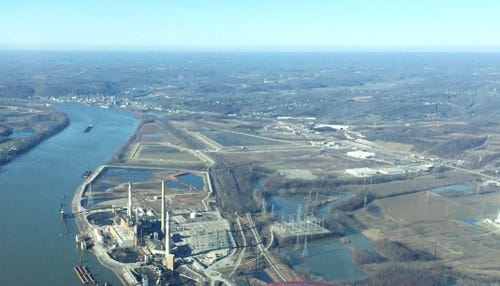Agreement Hones in on Potential Fourth Port Site
 The location in Dearborn County could serve as the state's fourth port. (photo courtesy of the Ports of Indiana)
The location in Dearborn County could serve as the state's fourth port. (photo courtesy of the Ports of Indiana)
Subscriber Benefit
As a subscriber you can listen to articles at work, in the car, or while you work out. Subscribe NowThe Ports of Indiana has signed a purchase agreement for 725 acres along the Ohio River as the potential location for another state-run port. The property in Lawrenceburg and Aurora is owned by Tanners Creek Development LLC and previously served as an American Electric Power Co. Inc. (NYSE: AEP) coal-fired power plant. If the site clears the state’s environmental and economic viability study process, the acquisition could be finalized by December of 2018.
The total purchase cost by the state would be approximately $8 million and Governor Eric Holcomb says "the economic benefits to the region and the state as a whole would be game changing – providing new jobs and development opportunities." He adds "while we’re only beginning this process, it’s hard not to be excited by the prospect of a fourth port in Indiana."
The concept for another state port, the first since 1985, was broached in January of last year by then-Governor Mike Pence during his final State of the State Address. He called for "vigorous" exploration of a fourth port that would give the region an economic boost. The old Tanners Creek plant site became the primary target soon after, and in October of last year, a more formalized vetting process by state leaders kicked in.
Ports of Indiana Chief Executive Officer Rich Cooper says "Indiana’s ports are important economic drivers for our state, connecting Indiana to the world every day. We welcome this opportunity to explore the possibility of a fourth port for our state and are eager to move quickly to determine the viability of this land for use as a port to attract major investments and further spur southeast Indiana’s economy."
The Ports of Indiana operates some 2,800 acres along the Ohio River (Ports of Indiana – Jeffersonville and Ports of Indiana – Mount Vernon) and off of Lake Michigan (Ports of Burns Harbor). It estimates an annual economic impact of $7.8 billion, supporting nearly 60,000 jobs.
